
| What is Flavor and Fortune? |
| How do I subscribe? |
| How do I get past issues? |
| How do I advertise? |
| How do I contact the editor? |
Read 13145313 times
Connect me to:
| Home |
| Articles |
| Book reviews |
| Letters to the Editor |
| Newmans News and Notes |
| Recipes |
| Restaurant reviews |
| Article Index (all years, slow) |
| List of Article Years |
| Article Index (2026) |
| Article Index (last 2 years) |
| Things others say |
| Related Links |
| Log In... |
| Authors |
| Categories & Topics |
China's Influential Cuisines--Part I
| by Jacqueline M. Newman |
Food in History
Winter Volume: 2010 Issue: 17(4) page(s): 31, 32, 33, 34, and 37
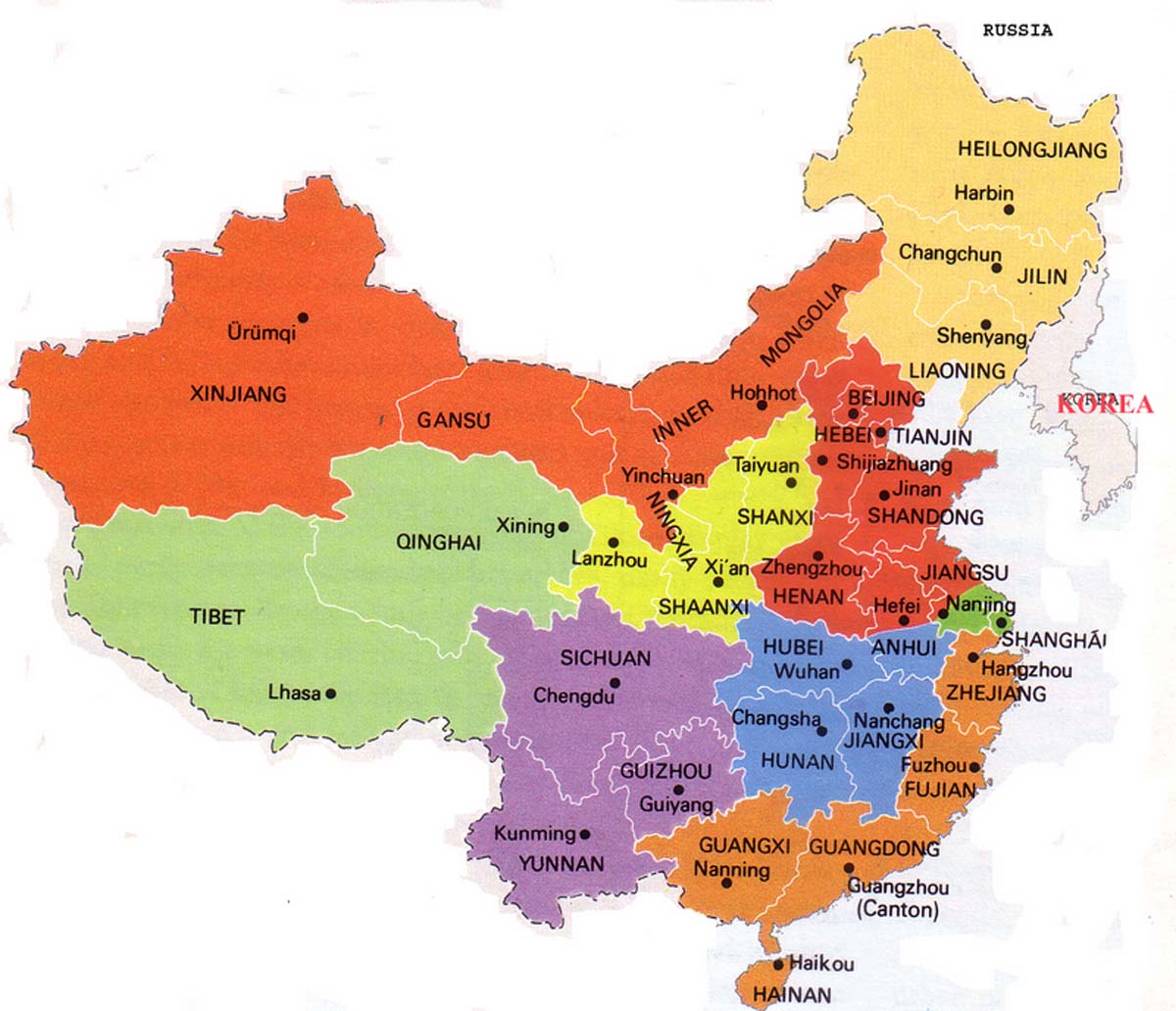 China has much diversity in climate and customs, in people and place, and of course, in its cuisines. Be they great historical culinary traditions, lovely literary ones, regional or religious cuisines, or those of China's many capital locations, the Chinese tout their food culture and its diversity. Some adore the number eight and believe it lucky, so they speak of the country's eight great culinary traditions. Others call these or other ones, China's eight influential cuisines. Still others use other numbers and other names to speak about other culinary traditions.
China has much diversity in climate and customs, in people and place, and of course, in its cuisines. Be they great historical culinary traditions, lovely literary ones, regional or religious cuisines, or those of China's many capital locations, the Chinese tout their food culture and its diversity. Some adore the number eight and believe it lucky, so they speak of the country's eight great culinary traditions. Others call these or other ones, China's eight influential cuisines. Still others use other numbers and other names to speak about other culinary traditions.
We have read generalizations that say Chinese foods are sweet in the south, salty in the north, sour in the west, and spicy in the southwest. There are others who disagree and tout China's foods as spicy in the east, etc. And there are other delineated differences. Aside from these disagreements, in this country with a long history, there is the question of does one mean cuisines past or present, culinary traditions by single location or single population, or some other differentiation?
Folks in the know about Chinese food speak about four cuisines; those of Guandong (Canton), Huaiyang, Shandong, and Sichuan; others use four and speak of cuisines north, south, east, and west. Are either of these the most popular or the most important ones? How often are they mentioned in China's voluminous literature? Many believe the number '4' is too low.
There are more than four or eight discussed in a book titled: Chinese Imperial Cuisines and Eating Secrets. It speaks of nine cuisines that influenced Chinese cookery. Elsewhere in that volume they talk of other cuisines not included in these nine or in other delineated groups. They say the nine most influential ones in their list are those whose influences impacted the country's overall cuisine are: Beijing, Shandong, Huaiyang, Jiangsu/Zhejiang, Fujian, Guangdong, Sichuan, Hubei, and the cuisine of the province of Hunan.
So how many and which ones should this magazine's editor report? This article's author debated long and hard as to how many and which ones to begin reporting about. What was most important when selecting some of China's most important cuisines in this first article about the famous ones. Was it the most important, or the most influential culinary traditions, their modern cuisines, or something else? And, how much space should be given to any one of them? What about telling why a cuisine is important? Then, which food cultures should be included in follow-up articles?
In the end, not to flout nor favor any popular listings, nor be in conflict with them or the many others who consider themselves experts, eight culinary traditions that many consider influential are where we decided to begin this magazine's explorations of China's great culinary traditions that Flavor and Fortune's readers need to know about.
We determined readers need understand why they are great, where they are, a bit about their history, what are some of their best known dishes are, etc. Future articles will explore more of these eight, other important cuisines, some in and near Beijing, some in other areas, cuisines of some well-known and influential ethnic minority and religious groups, and some representing Chinese foods overseas.
Therefore, what begins this exploration are five of the eight great influential Chinese cuisines that are not the only ones, but are the first five of the most influential eight to be shared with our readers. Why five, space determied how many. They are presented in alphabetic order and are the city and/or the provincial foods of: Anhui, Guangdong, Fujian, Hunan, Jiangsu. Part II will continue with Shandong, Sichuan, and Zhejiang; and then go on to explore other important cuisines.
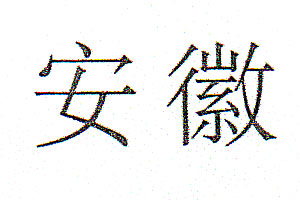 ANHUI CUISINE, also known as Hui cuisine, is named after foods of two prefectures of its name-sake land-locked province. They are Anqing and Huizhou. The province itself borders on the provinces of Henan, Hubei, Jiangsu, Jiangxi, Shandong, and Zhejiang. This cuisine, as do many others, has many different/other names. Some of them are: Huaibei, Huicai, Huizhou, Huangshan, Yanhui, and still others. Therefore, it was not only difficult to select which cuisines to begin with, but also difficult to name and therefore order them in this initial article.
ANHUI CUISINE, also known as Hui cuisine, is named after foods of two prefectures of its name-sake land-locked province. They are Anqing and Huizhou. The province itself borders on the provinces of Henan, Hubei, Jiangsu, Jiangxi, Shandong, and Zhejiang. This cuisine, as do many others, has many different/other names. Some of them are: Huaibei, Huicai, Huizhou, Huangshan, Yanhui, and still others. Therefore, it was not only difficult to select which cuisines to begin with, but also difficult to name and therefore order them in this initial article.
With almost sixty-two million people living in the Anhui Province, most Han Chinese, the cuisine does have input from Hui and She peoples, also Manchu, Miao (Hmong), and Zhuang minority populations.
The cuisine, like the region, is divided in sections. There are three of them with river-related differences. There is Huaibei which is north of the Huai River, Jianghuai which is between the Huai and Yangzi rivers, and Jiangnan which is south of the Yangzi River. This cuisine is also related to that of Huizhou which is located in the south in this province.
Sometimes called one of China's granaries, Anhui has semi-humid monsoon climate, is the birthplace of much of China's ancient food culture, and is known for its rice, wheat, and other fine agricultural products. It is also known for its soft-shelled turtle, ham, its Huangshan braised pigeon, steamed frog, stewed fish, and bamboo shoots; the latter are often cooked with sausage.
During the Southern Dynasty (420 - 589 CE) when businessmen from Huizhou traveled, they wanted foods from their home region. To get them, they had their servants bring bamboo shoots and other foods and then cook them for them. One of these dishes was Wen Zheng Bamboo Shoots. Laozi, a famous philosopher, when in the capital city of Hefei, helped make this and other dishes famous.
Another well-known dish, called a hodgepodge, is named after a top official and known as Lihongzhang Hotchpotch. It is loaded with fish, fish maw, squid, sea cucumber, tripe, bamboo shoots, bean curd skin, chicken, ham, salted egg yolks, pork liver, spinach, scallops, and dried mushrooms.
Most hui cai or Huizhou foods, Anhui foods, too, are slightly spicy and salty, and often braised or stewed. They can be made with tea leaves, xiang gu mushrooms, dates, stone frog, pangolin, and other game found in the Huangshan Mountains.
Foods from other mountain areas are also well known in this Hui cuisine. Bean Curd from the Bagong Mountain is one, as is Cocoon Dog Stew, and Wild Chicken Soup. Delicacies from mountains and rivers include soft-shelled turtle cooked with ham, a dish called Grape Carp that is prepared looking like grapes on top of a fish. A duck dish made with scallions, pork, and the xiang gu or black mushrooms and enhanced with soy sauce, bamboo shoots, and ham. This dish is loved, as is their popular mountain taro made with honey.
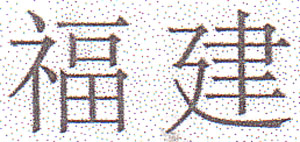 FUJIAN CUISINE, another one of the eight great cuisines, uses many river fish, shrimp, and sea foods from its southern coastal provincial areas. Directly across from Taiwan and the Taiwan Straits, known as Min Cuisine, the food of this cuisine comes from mountainous, hilly, and fertile flat lands, and from beyond its sea coast. Foods here originated in and around the Min River during Qin and Han Dynasty times (221 - 206 and 206 BCE and 220 CE, respectively).
FUJIAN CUISINE, another one of the eight great cuisines, uses many river fish, shrimp, and sea foods from its southern coastal provincial areas. Directly across from Taiwan and the Taiwan Straits, known as Min Cuisine, the food of this cuisine comes from mountainous, hilly, and fertile flat lands, and from beyond its sea coast. Foods here originated in and around the Min River during Qin and Han Dynasty times (221 - 206 and 206 BCE and 220 CE, respectively).
Climate in this region is mild with much rainfall, some say too much in this land of many delicacies. Bounded on the East by the Sea and the West by mountains, the center of the cuisine sits in the Minhou County. This multi-lingual region has the provincial capital of Fuzhou on an inlet, and the city of Xiamen, further south and on the sea. Both were and are shipping off points for those seeking food and fortune by sea.
Many folk from the mountains and low lands have migrated and returned, or gone south to Taiwan and Southeast Asia. They went looking for new foods, a better life, and a less-hassled way to live. More than thirty-six million remained and have increased their investments and their culinary capital.
On the culinary perspective, this cuisine is a latecomer among those recognizing China's important and influential food cultures. Min foods are slightly sweet and sour, and loaded with fermented distillers grain known as wine lees, particularly red wine lees.
Popular Fujianese foods are Pickled Snails, Litchi Pork, Pipa Shrimp, Dragon Shrimp with Phoenix, Wine-soaked Spare Ribs, Razor Clams stir-fried with Bamboo Shoots without soy sauce, Mussels in Chicken Soup, and many other soups. This cuisine is known for two or more soups consumed at every main meal. No meal without several of them is even considered a meal. Here they say, 'One Soup Has Ten Variations¡' and they do make many of them for lunch and dinner. Fujian cuisine practitioners also prepare many stewed and braised dishes, cook with tea leaves, bamboo shoots, many kinds of fish and with other foods of the sea. When bragging, they say the cuisine uses more than two hundred fifty different kinds of sea foods prepared alone or with chicken, duck, and pork. They make many of them with red or white wine lees.
With sea foods so central to the Fujianese cuisine, one unique food is their fish balls; they make them with their center part filled with meat. They also stir-fry them in many of their dishes and they are found in their soups and stews. They and the rest of this cuisine is slightly sweet and sour and not very salty.
This province grows a lot of tea, and processes and sells most of it as oolong tea. They also grow many tropical fruits and use both in many of their dishes. One of the most famous among them is very aromatic and called Buddha Jumps Over the Wall, so-named because any religious person would do just that to have some of this dish. It not only smells great, but tastes terrific as it is made with more than twenty different kinds of food, and usually made in a large rice-wine jar. Long-simmered over a low fire, and loaded with many different meats, sea foods, and vegetables, it is more than any Buddha would want to eat.
Spring Rolls are a traditional snack food, somewhat like jiao zi, they are eaten during Spring Festival, hence their name. In Xiamen, they like their spring rolls with bamboo shoot jelly and yu bao or lightly fried taro buns. Peanut Soup, vegetarian dishes, and ancient medicinal foods are adored items in this cuisine's larder, as are almost every meat or fish dish, many made with crabs and/or squid.
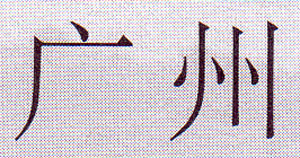 GUANGDONG CUISINE, also called Yue cuisine, is touted by some to be the best in all of China. Many in the United States believe that, perhaps because more people know more about Cantonese foods than about the foods of any other Chinese cuisine. These foods are from a province of nearly one hundred million people and come from the capital city of Guangzhou, known in the past to westerners as Canton. Here, some ten plus million people live who savor foods from many delicious restaurants serving items from virtually everywhere in China.
GUANGDONG CUISINE, also called Yue cuisine, is touted by some to be the best in all of China. Many in the United States believe that, perhaps because more people know more about Cantonese foods than about the foods of any other Chinese cuisine. These foods are from a province of nearly one hundred million people and come from the capital city of Guangzhou, known in the past to westerners as Canton. Here, some ten plus million people live who savor foods from many delicious restaurants serving items from virtually everywhere in China.
This southern Chinese Pearl River cuisine is one of the four cuisines first mentioned and one of the eight great traditional cuisines. Famous for tea houses serving every kind of snack food imaginable including cha shao bao, the steamed sweetened pork-filled leavened-dough delights; they are called the 'treasure' of this delta city.
Also known as Yue cuisine, foods from here include dishes from Chaoxhou, Guangzhou, and Dongjian. They are characterized by fresh ingredients, wild animals, local tree fruits, slithering snakes called 'dragons' and cats called 'tigers.' Here they cook in salt or in wine, in milk, or in soft-fried eggs, and they are known for making foods velvet, and for preparing their foods less cooked than most of the rest of China.
The foods of this southeastern coastline include lots of foods of the sea, tropical fruits, sugar cane, every kind of vegetable under the sun. and all types of cultivated and captured fish for the folks in this very heavily populated region.
Hong Kong was seceded to the British in 1842,after the Treaty of Nanking. Many people moved to Shanghai and Beijing, but left the strength of their culinary. Many more foreigners poured in, and then more deep-frying, stir-frying, stewing, broiling, boiling, and roasting took hold. These and boasting they had the best Roast Goose in the country took over. They brag about local shark's fin and bird's nest soups, Dong Jiang Chicken, marvelous Mutton Balls, crisp Carp, super soy sauce chicken, and many dishes from the Manchu-Han banquet repertoire that are still served in Beihai Park at its famous Fangshan Restaurant.
Guangdong cuisine seasons its foods with onion, garlic, ginger, dried tangerine peel, spiced salt, licorice root, cloves, and anise. These and oyster sauce, fermented black beans, and even curry gives this cuisine great depth and breadth.
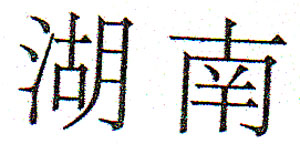 HUNAN CUISINE, also called Xiang Cuisine, is said to have originated in the Spring and Autumn Period (770 - 476 BCE). Now this cuisine is of some sixty-five million living in this province whose capital is Changsha. There are about seven million people living in this port city on the Xiang River. Most are Han Chinese, but some fifty minorities also live here, and over the years, they have influenced Hunan cuisine giving it many sour and hot tasting foods.
HUNAN CUISINE, also called Xiang Cuisine, is said to have originated in the Spring and Autumn Period (770 - 476 BCE). Now this cuisine is of some sixty-five million living in this province whose capital is Changsha. There are about seven million people living in this port city on the Xiang River. Most are Han Chinese, but some fifty minorities also live here, and over the years, they have influenced Hunan cuisine giving it many sour and hot tasting foods.
Named hu meaning 'lake' and nan meaning 'south,' many people live near Lake Dong Ting, the second largest freshwater lake in the country. They consider themselves living in the 'land of fish and rice.' Many foods grown here are said to be the best in the country including local barley, buckwheat, rice, corn, sweet potatoes, and tea.
This province is the largest producer of rice, the second largest producer of tea, and before pollution ran rampant, their freshwater lake was an important source of their fish. Foods here use lots of chili peppers, the above-mentioned grains, much bean curd, mushrooms, and meats, and lots of mountain-grown foods.
Hunan Cuisine loves its Steamed Spare Ribs in Bamboo Tube, Grilled Roast Duck, Green Bamboo Steamed Fish, Steamed Pumpkin, smelly bean curd, Dongan Chicken, Candy Lotus, Roasted Fin, dried meat cooked with eel, their restaurant-popular gan guo, which is a pot of many different ingredients boiling away until ordered and eaten. They also adore Soy Sauce Pig's Trotters, and Candied Lotus, and more than four thousand other different Hunanese dishes.
This cuisine uses its many hot peppers, they say, to help remove dampness and cold. Others visit here to eat the local dishes and see the almost one thousand historic sites including Mawangdui where an aristocratic Han Dynasty family are entombed, Mount Heng which is one of five sacred Taoist mountains, and the town of Shaoshan where Mao Zedong was born.
They also come to eat the many stewed, simmered, steamed, cured, stir-fried, and fragrantly prepared dishes of this cuisine. That and enjoy game, frogs legs, and other wild foods from the many mountainous regions. Adored by these visitors are Xiao Xiang Turtle, Wu Ling Snake Soup, and Shrimp in Lotus Pad.
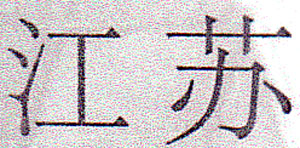 JIANGSU CUISINE, also known as Su Cuisine,includes many foods from China's eastern seacoast. In the Jiangsu Province, more than seventy-seven million people live with Nanjing, the provincial capital, where ten percent of the people of this province reside. Around here is the one of the most densely populated regions in the country. This province borders on Shandong, Anhui, and Zhejiang, and on the city of Shanghai.
JIANGSU CUISINE, also known as Su Cuisine,includes many foods from China's eastern seacoast. In the Jiangsu Province, more than seventy-seven million people live with Nanjing, the provincial capital, where ten percent of the people of this province reside. Around here is the one of the most densely populated regions in the country. This province borders on Shandong, Anhui, and Zhejiang, and on the city of Shanghai.
Foods here are salty and slightly sweet, many more soft than made in other cuisines. Su Cuisine is also known as Jin Su, Jin Long, simply Jing Su, and Yang Cuisine. The latter is named after Huaiyan Cuisine. Foods here include Nanjing-, Suzhou-, and Wuxi-style foods, many include some sugar, and many are often red-braised, that is in soy sauce. The Wuxi-style dishes can be called: Three Whites for their extensive use of whitebait, white fish, and white shrimp.
Featured in Su Cuisine are Braised Spareribs, Fried Gluten Balls, Fu Rong Dan, a whitebait omelette. Squirrel Mandarin Fish, Crab Meat Balls, Nanjing Pressed Duck, Eight Delicacies Soup, Longchi Carp, Ca fish from the Grand Canal, and Eight Wild Vegetables with items from local inland mountains. This cuisine has and loves many snacks including Jellied Bean Curd, Glutinous Rice Dumplings stuffed with osmanthus flowers, Silvery Noodles with Shredded Chicken plain or in a dough, cakes baked with duck fat, and dumplings stuffed with shredded dried bean curd. People here also enjoy many variations of foods from Hangzhou, Yangzhou, Suzhou, Lingpo, and Shanghai.
Lots of agriculture and aquaculture enable foods of this cuisine to include many land and sea foods. Overall, the cuisine is recognized as being slightly sweet with dishes made stir-frying, deep-frying, dry-frying, red cooking, simmering, and/or stewing them.
| Anhui Turtle with Ham |
|---|
1 softshell turtle (no more than two pounds) 1 scallion, tied in a knot 2 slices fresh ginger, peel left on, ginger scored on both sides of each slice 2 Tablespoons Chinese rice wine 6 medium size Chinese black mushrooms, soaked for half an hour, their stems discarded 2 Tablespoons vegetable oil 4 scallions, cut into one-inch pieces 8 cloves fresh garlic, peeled 2 Tablespoons white rock sugar 2 Tablespoons peeled minced fresh ginger 3 Tablespoons thin soy sauce 3 Tablespoons chicken stock 1 Tablespoon Chinese white vinegar 1 Tablespoon tomato paste or ketchup 1/8 teaspoon ground white pepper 3 Tablespoon Yunnan (or Smithfield) ham, minced 2 Tablespoons water chestnut flour mixed with three tablespoons cold water 1 teaspoon sesame oil Preparation: 1. Head removed and discarded, then cut in half. Its soft material under shell scraped away and discarded, then blanched for two minutes, that water discarded, as well. 2. Put turtle in deep bowl with knotted scallion, slices of fresh ginger, and rice wine, and steam these together over rapidly boiling water for fifteen to twenty minutes (the longer time if about two pounds, the shorter time if one and a half pounds); then remove from steamer and discard anything other than the turtle, and chop the turtle into three-inch pieces. 3. Heat oil and fry scallion pieces and whole garlic cloves for two minutes, be sure they do not burn, then add the turtle, the whole mushrooms, rock sugar, minced ginger, soy sauce and chicken stock, also the vinegar, tomato paste or ketchup, and the ground white pepper. Stir this well, but gently until all ingredients are well-mixed, then reduce heat and simmer for five minutes or until all liquid is absorbed. 4. Add ham and cornstarch mixture, and stir until thickened and the sauce is clear before putting everything into a pre-heated serving bowl. Sprinkle with the sesame oil, and serve. |
| Fujian Chicken and Rice |
|---|
1/2 cup red rice, soaked in warn water for two hours 1/2 young chicken with its skin and bones, cut into two-inch pieces 2 cloves fresh garlic, peeled and minced 1 small chili pepper, seeded and coarsely chopped 2 Tablespoons vegetable oil 6 dried Chinese black mushrooms, soaked for twenty minutes, stems discarded, mushrooms quartered 6 Tablespoons fresh soy beans out of their pods 1 Tablespoon thin soy sauce 1 Tablespoon dark soy sauce 1 teaspoon sesame oil Preparation: 1. Drain the rice, then rise with cold water, and drain thoroughly, and put into a serving casserole. 2. Mix chicken with garlic and chili pepper, toss well, and let rest for twenty minutes. 3. Heat wok, add the oil, and stir-fry the chicken pieces for one minute until crisp on the outside, then add the mushrooms and stir-fry for two more minutes. Remove everything to the casserole. 4. Add soybeans and both soy sauces and one cup of water. Bring to the boil, then reduce heat to a simmer and cover the casserole and let it simmer for twenty minutes, then remove the cover and continue to simmer for ten more minutes, then remove it from the heat source, and let it rest for fifteen minutes before adding the sesame oil, and bring it to the table and serve. |
| Guangdong Paper-wrapped Chicken |
|---|
1 whole chicken breast, sliced in one-half by two-inch pieces 1/2 teaspoon salt 1 teaspoon granulated sugar, divided into two batches 1/8 teaspoon ground white pepper 1 teaspoon thin soy sauce 1/2 teaspoon cornstarch 4 Chinese black mushrooms, soaked, then stems discarded, then sliced 3 scallions, cut into two-inch long slivers 2 slices peeled fresh ginger, sliced into thin slivers 10 glutinous rice wrappers, each about ten-inches square 2 cups vegetable oil few sprigs fresh coriander Preparation: 1. Mix chicken slices with salt, half the sugar, and the ground pepper, and set aside for twenty minutes. 2. Bring three cups of water to the boil, and reduce heat and simmer the chicken slices for five minutes, then remove and drain well, and mix the chicken with the soy sauce, the rest of the sugar, and the cornstarch and set aside for five to ten minutes. 3. Put one wrapper on a large plate, add some of the chicken meat, some mushrooms, scallions, and a few slivers of ginger. Fold in the sides, then roll this filling material and wet the end with a drop of water, and set it down on that sealed spot. Repeat until all ten wrappers are filled and rolled. 4. Heat the oil until medium-hot and fry the paper-wrapped chicken-filled rolls for two minutes, putting them into the oil, sealed side down; and turning them once when frying them. Remove from the oil to a paper towel, then to a pre-heated plate, and garnish with fresh coriander. |
| Hunan Eggs, No Yolk |
|---|
8 to ten eggs (one per person) 2 conpoy, soaked for twenty-five minutes in warm water, then steamed for half an hour minutes 1 cup raw rice 1 and 1/2 cups chicken broth 1 teaspoon salt 2 teaspoons cornstarch mixed with two teaspoons cold water 1 cup pea shoot greens Preparation: 1. Make a small hole in the wider end o n the egg, and a smaller one on the other end. Carefully blow out the raw egg, then separate yolk from the white, and refrigerate yolks for another use. If they are whole, they can be covered with cold water. 2. Prepare the conpoy as directed above then when cool manually tear it into thin strips and set aside. Leave water boiling in the steamer. 3. Rinse the egg shells with cold water, then using some soft cheese cover the smaller hole in the shell, and stand it in a steamer basket, large hole up, surrounded by one cup or more of raw rice set in so they remain standing, big hole up. 4. Mix chicken broth, salt, egg whites, and the cornstarch mixture until well-combined, then using a fine funnel or a small pitcher, fill the empty egg shells with this broth mixture. Steam the broth-filled egg shells over slowly boiling water for one hour, then take eggs out of the steamer basket and allow to rest for half an hour. 5. Carefully peel the eggs, and be sure no shell remains on their set fillings. 6. Steam the pea shoot for five minutes, drain and put on a platter. Put the no-yolk set broth-filled eggs on the greens, scatter the shreds of conpoy on and around them, and serve. |
| Jiangsu Duck and Taro |
|---|
1 pound taro 1 duck, between five and six pounds 2 scallions, each one tied in a knot 2 slices fresh ginger, each one scored on each side 2 Tablespoons dark soy sauce 2 Tablespoons Chinese rice wine 1 teaspoon salt 1 teaspoon granulated sugar Preparation: 1. Steam taro over boiling water for half an hour, then remove from the steamer, cool ten minutes, then peel and set aside. When cool, cut the taro into one to two inch pieces, and holding each one, squash it into a more rounded shape. 2. Cut duck in quarters, put them into a bowl with the knotted scallions and the ginger slices, and steam over rapidly boiling water for forty minutes. Discard and liquid and the scallions and slices of ginger, and cut duck into two-inch pieces. 3. Put duck pieces and taro balls into a large casserole, add the soy sauce and rice wine, and the salt and sugar, mix gently, cover, and simmer stirring every five minutes, until the duck is very tender; about twenty minutes, then serve. |

Copyright © 1994-2026 by ISACC, all rights reserved
Address
3 Jefferson Ferry Drive
S. Setauket NY 11720